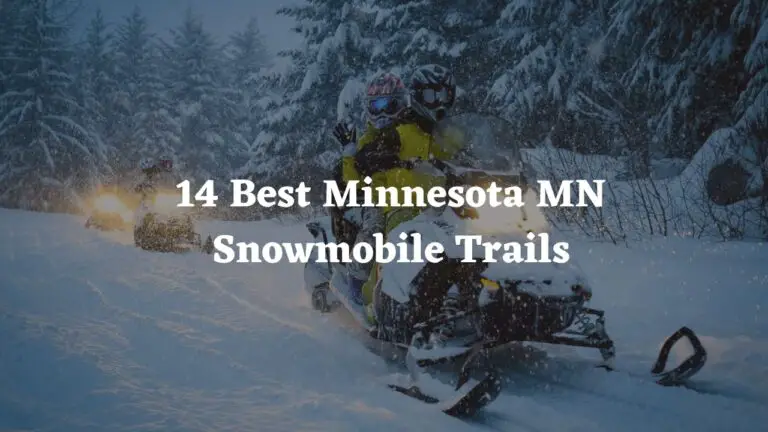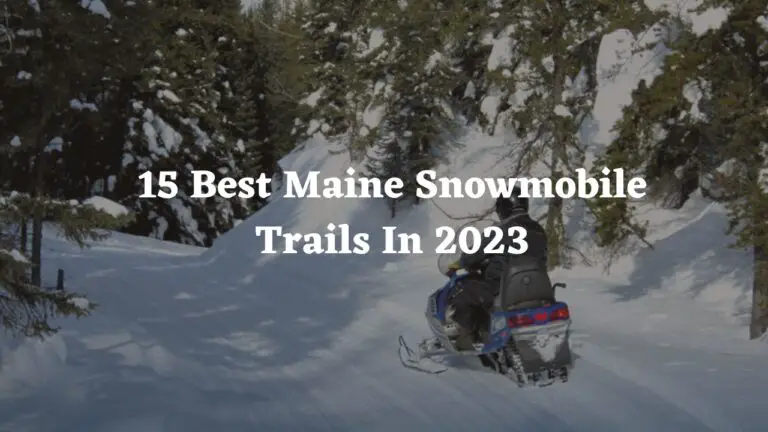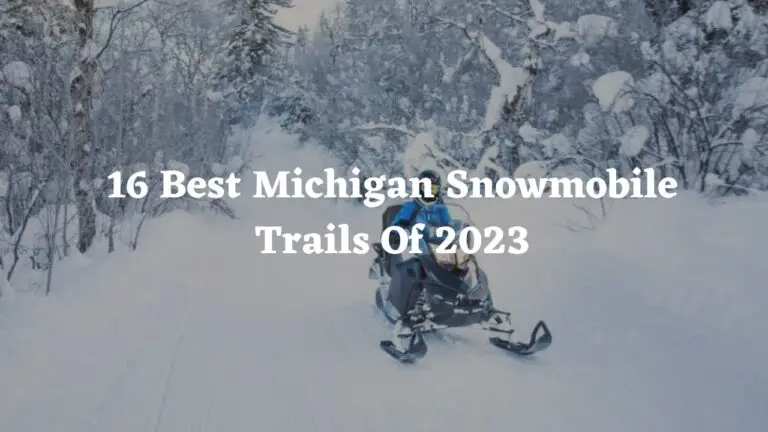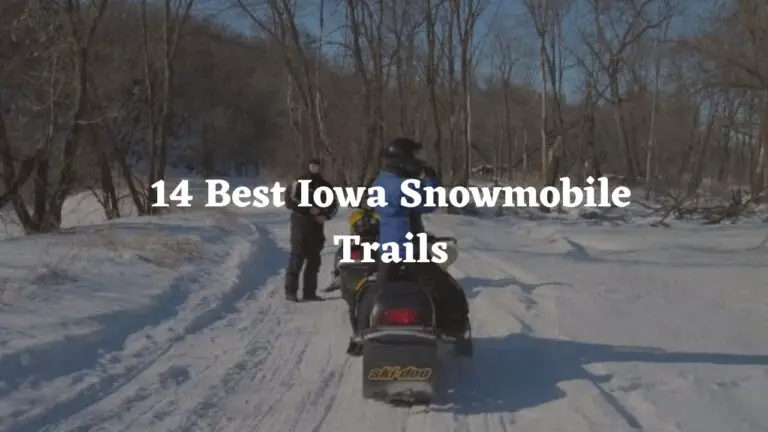Snowmobiles Complete Mastery Guide

Snowmobiling is a popular winter recreational activity where a snowmobile, also known as a sled, is ridden across snow. Snowmobiles are motorized vehicles designed to travel on snow. They have skis on the front to steer and a tread on the back to propel the sled. Snowmobiling is a fun way to explore winter landscapes and enjoy the outdoors during cold weather.
This guide will provide a comprehensive overview of snowmobiles, including different types, key parts, maintenance, riding techniques, safety considerations, popular snowmobiling locations, and getting started in the sport.
Table of Contents
History of Snowmobiles
The first snowmobile was invented in the early 1900s, but recreational snowmobiling did not become popular until the 1960s and 1970s. Early snowmobiles used rubber tracks or wheels, but modern snowmobiles have a rear tread and front skis. Engineers worked to develop more powerful and reliable engines and effective track designs to improve performance in deep snow.
Snowmobiling grew rapidly as a winter recreation activity, with clubs forming and designated snowmobile trails being developed. Major manufacturers like Arctic Cat, Polaris, and Yamaha began producing snowmobiles. Throughout the decades, snowmobiles have continued to evolve with more advanced technology, materials, and designs. Today, snowmobiling is a major winter sport across North America and other northern hemisphere regions.
Types of Snowmobiles
There are several different categories of snowmobiles designed for different riding purposes:
- Trail/Recreational: The most common type of snowmobile, designed for casual riding and trail use. They provide a smooth ride and good balance of performance, handling, and comfort for one or two passengers.
- Mountain: Built for technical terrain and deep snow riding with long track length, more suspension, and powerful engines. Designed for climbing steep slopes and aggressive riding.
- Performance: High-performance models focused on speed, acceleration, and handling for racing, high-speed trail riding, or high-adrenaline riding. May sacrifice some comfort for performance.
- Utility: Used for work or transportation across snow with utilitarian features. Can pull sleds or cargo and designed for durability.
- Crossover: Blends attributes of different types like recreational trail capabilities with high-performance engines. Designed as a crossover between categories.
- Youth: Designed for kids and young riders. Usually smaller and have lower power with focus on safety and ease of handling.
Within each category, there are models from different manufacturers with varied features and engine options. Consider how and where you plan to ride when selecting a snowmobile type.
Key Parts of a Snowmobile
Snowmobiles are complex machines with hundreds of parts, but there are several key components that determine how a sled performs:
- Engine: Provides power to propel the snowmobile. Usually a small gasoline engine with options for 2-stroke or 4-stroke engines. Measured in cc like other motors.
- Track: The continuous belt tread on the rear that grips the snow. Made of rubber with metal cleats. Determines traction and floatation.
- Skis: Upturned skis on the front to steer the sled. Materials like steel or carbon fiber used. Runners on bottom slide across snow.
- Suspension: Shock absorbers and springs allow the sled to glide across uneven terrain. Front and rear suspension systems vary by model.
- Chassis: Provides the main framework that connects all components. Usually made of strong but lightweight metal.
- Body: Plastic panels surround the chassis to protect components and provide aesthetic cover. Seats 1-2 riders.
- Controls: Consists of handlebars, brakes, throttle, switches, and instrumentation for operating sled.
Proper setup and maintenance of all systems is required for optimal handling, performance, and longevity.
Snowmobile Maintenance
Like other motorized vehicles, routine maintenance is essential for snowmobiles. Some key maintenance tasks include:
- Oil Changes: Change engine oil and filter at regular intervals per manual. Keeps engine lubricated.
- Drive Belt: Inspect and replace worn drive belts that connect engine to track. Ensure proper tension.
- Track Tension: Check and adjust track tension to specifications. Prevents slipping and damage.
- Brake Pads: Check brake pad thickness and replace if worn down. Critical for safe stopping.
- Spark Plugs: Replace spark plugs at specified intervals. Helps engine run efficiently.
- Suspension: Inspect shocks and lubricate components. Tuning may be needed for proper handling.
- Coolant: Check engine coolant level and condition. Change as needed to avoid overheating.
- Filters/Fluids: Replace air, fuel, and oil filters. Change hydraulic and brake fluids.
- Lubrication: Apply lubricants to any moving joints, pivots, cables, etc. Keeps parts operating smoothly.
Always consult owner’s manual since maintenance needs vary across models. Proper care preserves performance and prevents breakdowns when riding.
How to Ride a Snowmobile?
Snowmobiling is an acquired skill requiring practice and training for proficiency. Here are some basics on how to ride a snowmobile:
- Wear protective gear – helmet, goggles, jacket, boots, gloves. Provides safety and warmth.
- Mount the sled by stepping on the right-side footwell, swinging your leg over the seat.
- Start engine – make sure throttle is closed, attach tether cord, turn ignition. May need primer button.
- Learn controls – handlebar grips have brake and throttle. Gauges display RPM, speed, etc.
- Accelerate gently, don’t open throttle 100% right away. Maintain steady speeds.
- Lean into turns using your body weight, don’t turn sharply at high speeds.
- Apply brakes gradually to slow and stop. Don’t brake hard on ice.
- Stand up on footwells and spread weight when riding over bumps. Use legs as shock absorbers.
- Cross steep inclines head-on, not sideways. Control speed and weight transfer.
- Use hand signals to indicate turning left, right, stopping. Helps communicate intentions.
Always ride within your abilities and comfort level. Practice makes for better control and more enjoyment. Take lessons if new to the activity.
Snowmobiling Safety
Snowmobiling involves inherent risks, but being prepared and riding responsibly promotes safety:
- Take a hands-on safety training course for riding techniques, hazard avoidance, rules of the road.
- Only ride trails and areas designated for snowmobiles. Avoid unsafe ice or terrain.
- Wear a DOT certified helmet, goggles, winter outerwear, gloves and boots.
- Ride sober within your abilities. Drugs and alcohol impair judgment.
- Bring emergency supplies – first aid kit, tool kit, GPS, flashlight, whistle, cell phone.
- Ride with a partner and stay within line of sight. Avoid riding solo in remote areas.
- Carry adequate fuel for length of trip plus reserves. Run out of gas in cold weather is dangerous.
- Beware of hazards like barbed wire fencing, downed trees, rocks, and ice patches.
- Don’t override your headlights at night. Slow down and stay on lit trails.
- Look out for other recreationists like skiers, hikers, and share trails safely.
Stay alert and anticipate unseen obstacles covered by snow that can be struck. Smart preparation and decision making enhance the safety profile of this fun sport.
Choosing the Best Snowmobile
Choosing the right snowmobile depends on factors like your riding style, skill level, budget, and intended use. Considerations when selecting a snowmobile:
- Type: Trail, mountain, performance – pick category based on riding terrain.
- Engine: Displacement, 2-stroke or 4-stroke, balance power and efficiency.
- Dimensions: Track length, ski stance, seat height. Affect handling and flotation.
- Features: Assess needs – cargo racks, trailering package, mirrors, heated grips.
- Brand Reputation: Compare reliability, owner satisfaction, resale value.
- Capability: Ensure model is capable of desired speeds, hill climbing, towing capacity.
- Comfort: Ergonomics, seat style, adjustability. Key for long rides.
- Maintenance: Consider maintenance costs, part availability, shop network.
- Safety: Look for safety enhancements – throttle guards, tethers, lights.
Try out different models and manufacturers to find the best snowmobile for your particular needs.
Top Snowmobile Brands
The snowmobile industry is dominated by several key manufacturers worldwide:
- Arctic Cat: Known for deep snow riding, variety of models, and trail riding performance. Based in Minnesota.
- Ski-Doo: Leading brand in Quebec, from agile performance sleds to utility models. Owned by Bombardier.
- Polaris: Top selling brand in recent years, offering recreational to high-performance snowmobiles.
- Yamaha: Renowned for powerful and durable 4-stroke engines. Broad range of sled classes.
- BRP: Parent company of Ski-Doo, produces Rotax engines. Known for speed and innovation.
- John Deere: Makes utility and trail snowmobiles designed for reliability and durability.
Each brand has a cadre of loyal owners and ongoing innovations that keep the industry dynamic and competitive. There are also smaller boutique brands producing sleds.
Popular Snowmobiling Locations
Prime snowmobiling areas have ample snow depth, groomed trails, stunning scenery, and a long season. Popular regions in North America include:
- Quebec: Hundreds of maintained trails and huge ridership makes Quebec the epicenter of snowmobiling culture. Main hub is Estrie region.
- Maine: Boasts over 13,000 miles of scenic trails including access to remote wilderness. Northern Maine gets heavy snowfall.
- Michigan: Trails crisscross the state including groomed pathways through thick forests. The Upper Peninsula draws sledders.
- British Columbia: Offers pristine mountain terrain with abundant snow. Popular regions include Revelstoke and Kootenay.
- Colorado: Relies on deep mountain snowpack for riding. Areas like Grand Lake provide epic vistas and valleys.
- Wyoming: Wide open spaces with varying landscapes throughout. Jackson Hole, Yellowstone and Laramie popular spots.
- Minnesota: Extensive maintained trail networks across the state. Features heavily wooded areas.
- Alaska: For more extreme riders, Alaska offers huge mountain ranges and endless snowy landscapes to traverse by sled.
Any region that gets reliable winter snowfall can offer great snowmobiling if proper trails are developed and maintained.
Getting Started Snowmobiling
Snowmobiling is a fairly accessible sport to get involved in if you live in snowy regions. Some tips for getting started:
- Take a hands-on training safety course to learn proper techniques
- Consider renting models to test out before purchasing your own sled
- Get proper protective winter riding gear – quality makes a difference
- Look into snowmobiling clubs, events, group rides to meet fellow riders
- Start on groomed trails and work towards more advanced terrain
- Study maps and trails in your chosen area beforehand
- Transport sled securely using trailer or truck bed with ramps
- Ensure sled is in excellent mechanical shape and well-maintained
- Invest in cold weather accessories like heated grips, visor outlets
- Ride conservatively within your abilities until gaining experience
- Consider sled choices like trail, mountain or performance depending on intended riding
With the right preparation and training, snowmobiling can be an exhilarating way to explore snow-covered landscapes. This winter sport appeals to thrill seekers and outdoor adventurers alike.
Snowmobile Maintenance & Repairs
Proper maintenance and repair is crucial to keep your snowmobile in top condition. Some key tips:
- Follow factory service manual – provides maintenance schedule and procedures.
- Change oil and filter as specified in manual, check levels routinely.
- Inspect drive belt for cracks, fraying or uneven wear and replace as needed.
- Check track tension and adjust to proper specification to avoid slippage.
- Lubricate suspension components and pivots according to manual.
- Replace spark plugs at recommended intervals for best performance.
- Check brake pads regularly and replace once worn down.
- Inspect skis for wear on blades, replace carbides if too worn.
- Test throttle and brake controls to ensure proper operation.
- Touch up any nicks in paint to avoid corrosion issues.
- For major repairs, consult a certified snowmobile mechanic.
Do not attempt repairs unless you have training – safety issues can arise. Proper upkeep prevents problems before they occur.
Must-Have Snowmobile Accessories
Beyond the sled itself, useful snowmobile accessories enhance the riding experience:
- Helmet & Goggles: Protect head and eyes, look for moisture wicking and breathability.
- Heated Grips & Visor: Keep hands warm and prevent visor fogging.
- Gloves & Boots: Waterproof and insulated gloves and winter boots with traction.
- Avalanche Safety Gear: Transceiver, probe, shovel for backcountry.
- GPS: Aid navigation in remote areas not on maps.
- Survival Kit: Fire starter, flashlight, first aid, emergency blanket.
- Tow Strap: To rescue stuck sleds or pull cargo.
- Cargo Rack: Provides storage space for gear and supplies.
- Covers: Protect sled in transport and storage between rides.
- Tool Kit: Spare parts, tools for emergency repairs on the trails.
- Jump Starter: Revive a dead battery when miles from help.
The right accessories enhance the experience while providing security and convenience. Invest to improve riding and safety.
Snowmobile Clubs & Events
Joining a local snowmobile club connects you to a community of fellow riders. Benefits include:
- Organized group rides on local trail systems.
- Season passes and registration discounts.
- Clubhouses as trailside rest stops and warming huts.
- Local area knowledge and trail conditions updates.
- Social events like safety workshops, races, festivals.
- Collective advocacy on trail access and development.
There are also various snowmobile events through winter:
- Sled rallies, poker runs, and fundraising rides.
- Races from drag racing to long endurance events.
- Manufacturer demo days to try out new models.
- Hillclimb competitions to conquer steep slopes.
- Grass drags and watercross racing on dirt or water in summer.
- Charity rides raising money for causes.
Clubs and organized events tap into the social camaraderie of the snowmobiling lifestyle.
Conclusion
Snowmobiling has come a long way since early homemade sleds to become a major recreational activity. With models engineered for all different types of winter terrain and riding styles, it provides an exciting way to enjoy snowy landscapes. Proper safety precautions and regular maintenance helps ensure positive sledding experiences. For winter enthusiasts, snowmobiling delivers an adrenaline filled adventure across stunning settings. With vast trail networks in northern regions, the opportunities are endless to fuel your passion for snowmobiling.






